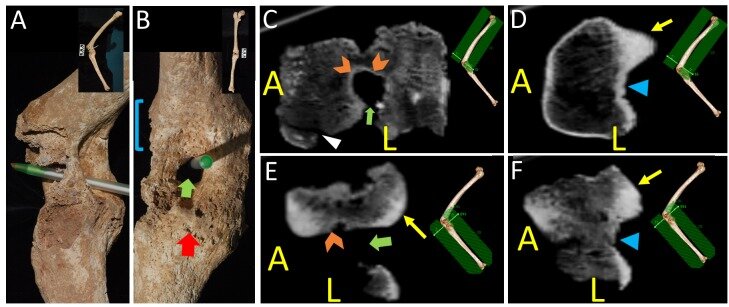The Leg Wound of King Philip II of Macedonia.
Cureus. 2018 Apr 18;10(4):e2501. doi: 10.7759/cureus.2501.
Brandmeir N, Payne R, Rizk E, Tubbs RS, Arsuaga JL, Bartsiokas A.
Abstract
Objective King Philip II, the father of Alexander the Great, suffered a penetrating wound to the leg from a spear that left him severely handicapped. His skeletal remains represent the first and only case of an injury from ancient Greece that can be directly compared to its historical record. The objective of the study was to confirm the identity of the male occupant of Royal Tomb I in Vergina, Greece as Philip II of Macedonia by providing new evidence based on anatomical dissection and correlation with the historical description of the wounds. Methods Radiographs and photographs of the leg in Royal Tomb I in Vergina were examined. Anatomical dissection of a cadaver with a reconstructed wound similar to Philip's was also completed to identify associated soft-tissue injuries. Results The left leg was penetrated by an object at the knee which resulted in joint diastasis, external rotation of the tibia, knee ankylosis, and formation of a granuloma around the related object. This caused massive trauma to the joint but spared the popliteal artery. This resulted in ligamentous injury as well as injury to the peroneal nerve and probably the tibial nerve, resulting in a complete palsy of those nerves. Conclusion This evidence exactly matches the historical sources and shows conclusively that the leg and Tomb I belong to Philip II. The anatomic and archaeologic evidence also serve as independent verification of some of the historical record of that period, better enabling scholars to judge the reliability of various texts. Furthermore, it gives invaluable information about surgical practices in ancient Greece according to Hippocratic methods and their outcomes. Finally, this sheds new light on the occupants of Royal Tomb II including the fact that the armor recovered there may have belonged to Alexander the Great.
KEYWORDS:
alexander the great; joint granuloma; knee granuloma; peroneal nerve injury; philip ii



